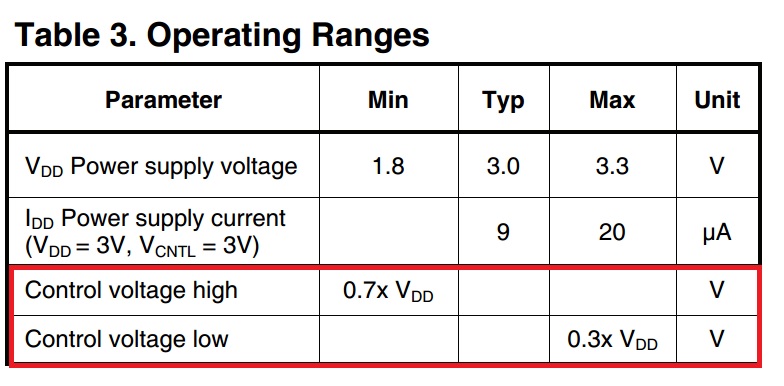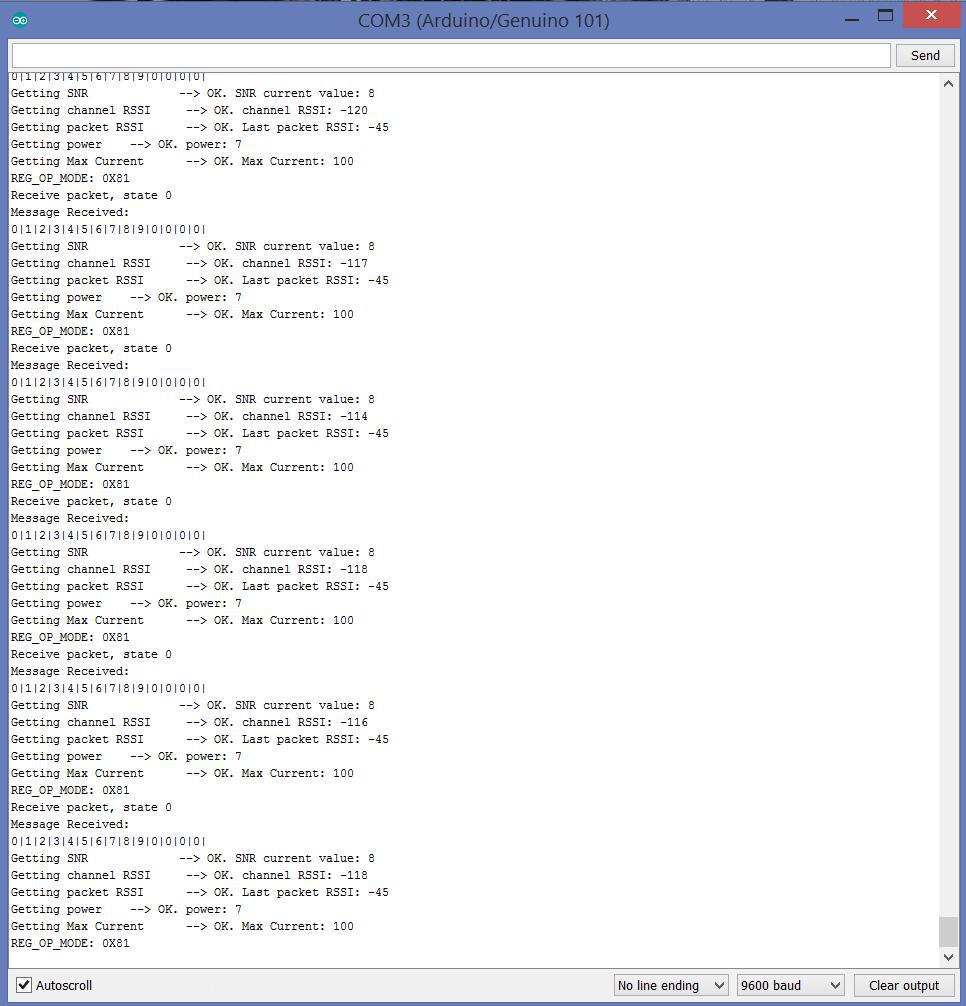Because LoRa is good enough to receive packets without an antenna connected, but has the symptom (as mentioned above) of very poor range.
I looked at the datasheet for the two RF switches (U2 and U5) that sit on the board. (http://www.psemi.com/pdf/datasheets/pe4259ds.pdf)
The way I read it is as follows: when pin 4 (CTRL) of U2 is low the common RF input/output (pin 5 RFC) is connected to pin 3 (RF2). So when the RXTX pin is not driven it is permanently tied to ground via a resistor on the board. Thereby setting both RF switches U2 and U5 in receive mode.
If you want to transmit you will have to set RXTX high, transmit a LoRa message and switch back to receive.
In case you are not operating this pin it might explain your poor range. A simple test could be to tie the pin on the board that you are using as transmitter to +3.3V and on the receiver to GND.
Curious if that helps…
It’s not possible to supply a 3.3v via a wire but there is nothing about voltage limiting on control pin(HIGH) in switch datasheet and so i used arduino 5v to set control pin high for transmitter and down for receiver.
so now, in 433MHz and 7dbm i get RSSI: -45 and SNR: 7-9 in a room(2m distance)! difference is very much, is this result acceptable or not?

Looks like your receive values are about 30dBm (1000x) stronger than before. I can’t comment too much on the absolute values you are reporting, but compared to your earlier readings this looks much better to me. If both your modules where in receive mode, whereas one of them was transmitting, that will explain why your range was that bad.
I’m grateful for your help sir. i’ll keep testing in a higher and LOS environment. maybe a better antenna like 4.5dbi gain give better results. Thanks again 
By the way i decreased transmit power to 7dbm. it was 14dbm before.
Hi, You cannot meassure the RSSI in a short distance with a normal antenna and receiver. Because near the antenna there is not a normal frequency domain propagation, the magnetic field is bigger than the electrical field. This is known as near field.
The limit of near field in air can be calculed as 3·lambda (wavelength), that for 466 MHz is: 3·3·10 exp8 / 466·10 exp6 = 1.93 meters
Below this distance, the electrical field you receive is lower than the magnetic field, so a regular device cannot measure the RSSI properly.
Hi,
Thanks for useful information.
Hello , I am using SX1276RF1JAS evaluation board , am facing now the same problem you had ,that rssi is very bad ,it gives -95 on 4 meters range while i got rssi -21 when using rfm96 module which is also sx1276 based , I make the control on the Rxtx pin and still having the same problem , when i test the connection between the RFo pin and the RFC ,no connection. What i have to do to make the module work as normal .
Hello , I am using SX1276RF1JAS evaluation board , am facing now problem that rssi is very bad ,it gives -95 on 4 meters range while i got rssi -21 when using rfm96 module which is also sx1276 based without amplifier, that is the strange . , I make the control on the Rxtx pin as you mentioned by applying 3.3 v and still having the same problem , when i test the connection between the RFo pin and the RFC ,no connection. What i have to do to make the module work as normal .and how to control between Tx and Rx ,maye be i am doing somthing wrong . Thanks in Advance.
Is your board for the same frequency band (ie 868 or 915) as you are attempting to operate it on? If you have the wrong board for your intended frequency the the chip itself will still work at the frequency your software sets, but all the RF networks surrounding it will be mistuned leading to poor signal strength.
Thank you for this response. Found this after hours of frustration, solved my rssi issue in a flash.
Hello,
Seizing the opportunity, I would to make a question to you guy. I have 2 SX1278 ( https://www.ebay.com/i/153522718712?chn=ps ) modules each one connected in a ESP32. I having poor signal but I have used GSM antennas. I like to know if they have to work without antenna if I put them near each one? (2 meters distance) I guess my antennas aren’t compatibles. But analog to wifi connections access point and client can work without antenna in short distances.
It should work after a fashion - but you run the risk of damaging the output stages of the chips.
It would be better to cut some wire to the correct length - 16.4cm - and use them.
However, please do not think of using an ESP32 as a single channel gateway as that’s very detrimental to the TTN community.
You don’t say where you are, so it’s not possible to comment on using 433MHz - it may not be authorised for where you are.
Thks @descartes!
It’s my 1st time with LoRa, in one of my tests I get the response from the transmitter, using GSM antennas in both LoRa. So, I will assume my wiring pins are ok. But after a while I cant get any radio signal, with or without my GSM antennas (not the correct kind, but It’s all I have to tests), may I have damaged the output stages as your warning.
So just to conclude, it’s better to test it without antennas, in a range of 2 or 3m it should to work?
About regulations I know I have to respect my country rules that are above 915mhz, but It’s just a home tests for a while.
I have appreciated your help Nick!
See above!
you run the risk of damaging the output stages of the chips.
Good to know that. I don’t understand why they sell the LoRas modules without antena. I will try use an ordinary wire of 16.4cm.
Thks!
Which one should they ship - a 3cm coil or a 1.5m fibre glass pole and everything in between.
But yes, it would be more helpful if they ensured at checkout that they’d offered something.
For 10metres or so, a piece of wire works fine, connecting it may require a soldering iron. Don’t have the modules too close.
Also best to keep >>3m apart for tests 2-3m could be too close (transitioning from operating in ‘far field’ to more like ‘near field’ also with potential front end overloads…)… You can also use half the wire length (may be esier to keep straight/stiff at ~8.2cm for EU868, slightly shorter for 915Mhz & above, with only small performance loss (GIYF - 1/4-wave antenna @ taget frequency)